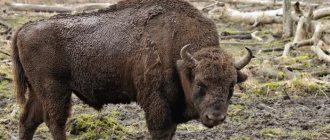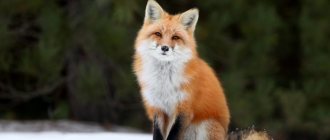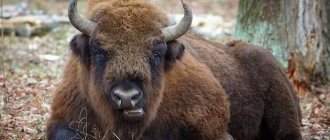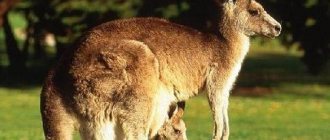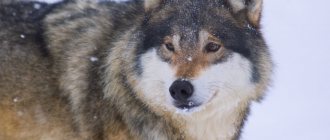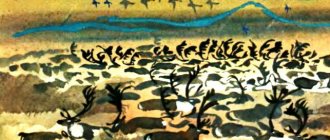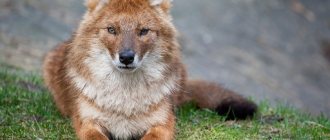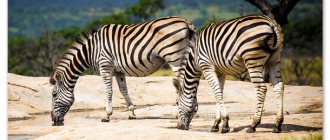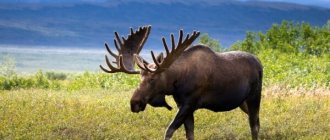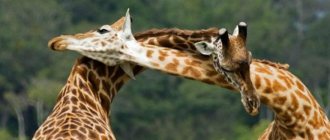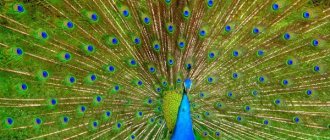The vast forests of Russia are home to many different species of animals. Among them there are also very unusual ones, such as flying squirrels.
Flying squirrels, as they are also called, got their nickname because they can deftly hover between trees, covering considerable distances. This is possible due to the fact that the animals have rather large membranes that connect their front and hind legs. A description of the flying squirrel will be presented below.
Appearance
Flying squirrels belong to the rodent family and also bear significant similarities to regular squirrels. However, what distinguishes them is the wide fold of skin that is present between the paws. This fold serves as a kind of parachute when the squirrel straightens its paws. This allows the animals to soar between the trees, and it is for this physique that they are nicknamed flying squirrels.
The flying squirrel is quite small in size, ranging from 12 to 23 cm in length. Of this length, only the tail occupies 11 to 13 cm.
The animal's head is round in shape, and its eyes are unusually large and completely black. The hind pair of paws is longer than the front, and at the ends of each paw there are small claws, pointed towards the end.
The flying squirrel boasts thick and soft fur, which is superior in quality to the “coat” of an ordinary squirrel.
In the warm season, the upper part of the body has a silvery tint with a reddish tint, and the lower part is white. In winter, the fur becomes even fluffier and thicker, and the color acquires various shades of gray.
Description of the rodent
— Advertising —
Flying squirrels differ from squirrels in their large eyes and the presence of skin membranes between the front and hind legs. This furry membrane is essential for parachuting. A crescent-shaped bone or cartilage extends from the wrist, which supports the anterior outer edge of the membrane and increases its area during tension. During a jump, the membrane stretches on the paws. The thick fur of the tail is divided into two sides and the tail is flat in appearance, it stabilizes movement in the air. The flight range depends on the type of flying squirrel and the terrain, and varies from 15-30 m for small flying squirrels in lowland forests to 100-120 m for giant flying squirrels.
Habitat
Where do squirrels live? You can find funny fliers throughout much of the Russian Federation, as well as in the forests of North America and Europe. The animals prefer moist birch forests, as well as alder forests.
Since the description of the flying squirrel indicates that the animals know how to plan, they settle on the tops of trees. This allows them to freely use their flight abilities, and also reliably protects them from attacks by predators.
Flying squirrels live in natural tree hollows or in bird nests.
Another reason why flying squirrels chose this particular habitat is their grayish color. It acts as a natural camouflage, merging with the bark of trees.
Protection from enemies
Thanks to its specific color, the animal can skillfully hide from its enemies, which include ferrets, martens, coyotes and eagle owls. The squirrel's excellent hearing and excellent vision help it resist ill-wishers, allowing it to move quickly in the dark. In the event of an unexpected attack, the animal pushes off from a hard surface with lightning speed and, straightening its membranes, retreats to a nearby tree. For terrestrial predators, catching such a nimble rodent is a rather difficult task. However, squirrels can also escape from pursuing an owl by suddenly changing their flight path.
As soon as it sees a person approaching, the flying squirrel climbs to the very top of the tree and presses itself as tightly as possible to the trunk. A couple of hours before sunrise, the squirrel retires to its own nest, where it spends the rest of the daylight hours. The nest for flying squirrels most often serves as a hollow, located at a respectful distance from ground level. In rare cases, they can occupy the nests of large birds such as magpies and crows. Sometimes it is occupied by a haino, which is a reliable fortification of an ordinary squirrel, built from leaves, moss and branches of various sizes. Gaino, as a rule, has a kind of roof that protects the inhabitants of the shelter from blizzards, snowfall or rain.
Lifestyle and habits
The flying squirrels' lifestyle is social. They can be found quite often near human settlements near forests.
However, during the period of raising offspring, females may be more aggressive than usual.
The animals are predominantly nocturnal. They leave their nests no earlier than dusk.
However, during the day you can also see flying squirrels, but these are mainly young individuals or nursing females. It is impossible to meet adult males during the day.
Most of the time a flying squirrel is active is spent searching for food.
The nests in which they live are most often round in shape and covered with soft moss, for example. It is also worth noting that two squirrels can live in one hollow. Only the female and her offspring live separately. She also more actively protects her nests.
How many years do they live
Captive flying squirrels have an average lifespan of 12-15 years. Animals living in the wild almost never live to this age. This is due to a large number of natural enemies. Very often, squirrels become victims of raccoons, martens, lynxes, coyotes and other predators. Tree snakes also hunt rodents. A squirrel hovering between trees is easy prey for birds of prey: owls, eagle owls, and falcons. Animals living near human settlements often suffer from attacks by cats. The average life cycle of flying squirrels in nature does not exceed 5-6 years.
Nutrition
What do flying squirrels eat is a rather interesting question, since their menu completely depends on their habitat.
However, the main diet of the animals consists of young buds on trees, and in some cases, young tree bark. It is also possible to eat young needles and seeds of coniferous plants.
What does a squirrel eat in the forest? To the previously listed food products of the common flying squirrel, you can add mushrooms and berries, if any are available in the forest.
However, this diet also contains the most important dish, which the squirrel not only eats, but also stores in reserve. Alder and birch catkins became such a delicacy.
Scientists suggest that in some cases the flying squirrel can destroy bird nests by eating chicks and eggs.
It is also worth noting that in winter it is very difficult to meet the common flying squirrel, since their activity drops sharply, and their food becomes what was stored in the summer. This diet is also sometimes supplemented with meat, which hunters place in bait.
Interesting facts about the rodent:
- The flying squirrel population is quite small, and hunting for most species is limited. Despite the beauty and softness of the animal’s fur, it is thin and fragile, which is why it is of little value and inconvenient to use.
- In captivity, the flying squirrel does not take root well and is rarely bred.
- It is difficult to see a flying squirrel in the forest. Its color helps it blend in with the trunks of aspens and other trees. The flying squirrel leaves virtually no tracks on the ground, or they are confused with those of squirrels. The presence of a flying squirrel in the forest is indicated by piles of droppings, which resemble bright yellow ant eggs. In the late evenings, the voice of a flying squirrel is heard, which sounds like a low chirping.
Reproduction
The reproduction of these animals has not yet been studied very well. At the moment, it is known that a female flying squirrel bears offspring of squirrels once a year. Most often, the brood consists of two to four squirrels.
Pregnancy lasts only 5 weeks. The brood is divided into two groups. The first appear in April-May, the second in June-July. The offspring are born naked and blind. Babies' eyes open after 15 days of age.
The babies leave the nest for the first time only after 36-41 days. After 43-45 days of age, the young individuals begin to make their first jumps, and after 50 days the brood reaches adulthood and begins to take care of itself.
The lifespan of these animals ranges from 9 to 13 years in the reserve (captivity) and up to 5 years in the wild. This difference in timing is due to the fact that many predators hunt flying squirrels.
Where does it live?
The habitat of flying squirrels extends to the northeastern part of Europe, Asia and North America. The only species of the genus of Eurasian flying squirrels is found in Russia - the common flying squirrel.
Where does he live?
Unlike ordinary squirrels, which prefer coniferous forests, flying squirrels settle mainly in mixed or deciduous forests with a large number of tall trees. The highest population density is observed in places where birch, alder and aspen grow.
The habitat of flying squirrels in Russia is alder forests near swamps and rivers. In Siberia, it is found in ribbon forests stretching along rivers, small birch forests, and floodplain thickets. In the taiga it prefers to settle near areas with deciduous plantings.
Some species of flying squirrels live in mountainous areas, making nests in small crevices and caves. The maximum altitude at which rodents are found reaches 4000 m above sea level.
Number and security
The number of these animals is quite small, which is why hunting them is prohibited. In addition, this species of animal is heavily protected, as evidenced by the fact that the flying squirrel is listed in the Red Book. Despite the fact that animal fur is thick and soft, it has little value as it is easily destroyed.
The Japanese flying squirrel, for example, is also listed in the Red Book due to the fact that it is not able to survive the harsh winter.
But the Siberian flying squirrel does not hibernate in winter, but stands out in that it can sleep for several days in a row during the cold season.
Flying squirrel at home: maintenance features
These tiny animals form deep bonds with their owners, and since they are social creatures, they do not tolerate loneliness very well. They are usually taken at the age of 1.5-2 months, and in order for them to quickly adapt to new conditions, it is recommended to feed the squirrels by hand for the first few weeks. Despite its love for a nocturnal lifestyle, the animal is able to rearrange its own biorhythms in order to spend more time with people. During the first two weeks of being in a new home, it is best to keep the animal in a special plastic portable container, after which it will need to be equipped with a permanent home.
Cell
It is preferable to choose a tall, spacious cage designed for large birds for the sugar glider. Inside the home there must be at least one birdhouse or other object in which the animal can hide from prying eyes and rest during daylight hours. The nest should be cleaned with disinfectants at least twice a week, and the cage daily. Inside the flying squirrel's house it is worth placing a thick branch of oak, alder or elm. Thanks to the wheel, the squirrel can maintain its own body in excellent physical shape. Small snakes and other rodents are best kept at a respectful distance from possums, as they are unlikely to live together under the same roof.
The floor in an enclosure or cage is usually covered with sawdust or special wooden pellets, which can be purchased at any pet store. It is also recommended to fill the cage with enough material such as moss, pieces of cotton wool, dry grass and fur. The animal will independently distribute them to create a cozy and warm shelter inside the cage.
Despite possible conflicts with representatives of other species, the domestic flying squirrel needs a constant companion. Those who decide to limit themselves to purchasing one, rather than two animals, should know that the animal will have to devote a lot of time, playing with it and entertaining it in every possible way.
Eating at home
Keeping in captivity requires a diet that differs from the wild environment in a number of ways. If flying squirrels living in forests feed mainly on food of plant origin, then domestic animals must be periodically given larvae, caterpillars, crickets, mealworms and other insects. Some breeders feed their pets eggs of small birds and canned cat food. It is important to ensure that the squirrel receives a portion of nectar or natural juice daily. You can also give them bee honey and finely chopped vegetables and fruits. The water in the drinking bowl should always be fresh to avoid the formation of harmful bacteria.
Not far from the source of drinking water, you need to place a large salt crystal, which is necessary to replenish the mineral-salt balance. In the absence of insects and other food of animal origin, you can feed the animals with low-fat cottage cheese and yoghurts without artificial flavors and preservatives. It is worth considering that flying squirrels require a sufficient amount of free space for daily training in jumping and improving their flight skills. Therefore, Chilean degus and other varieties of squirrels are more popular as pets.
